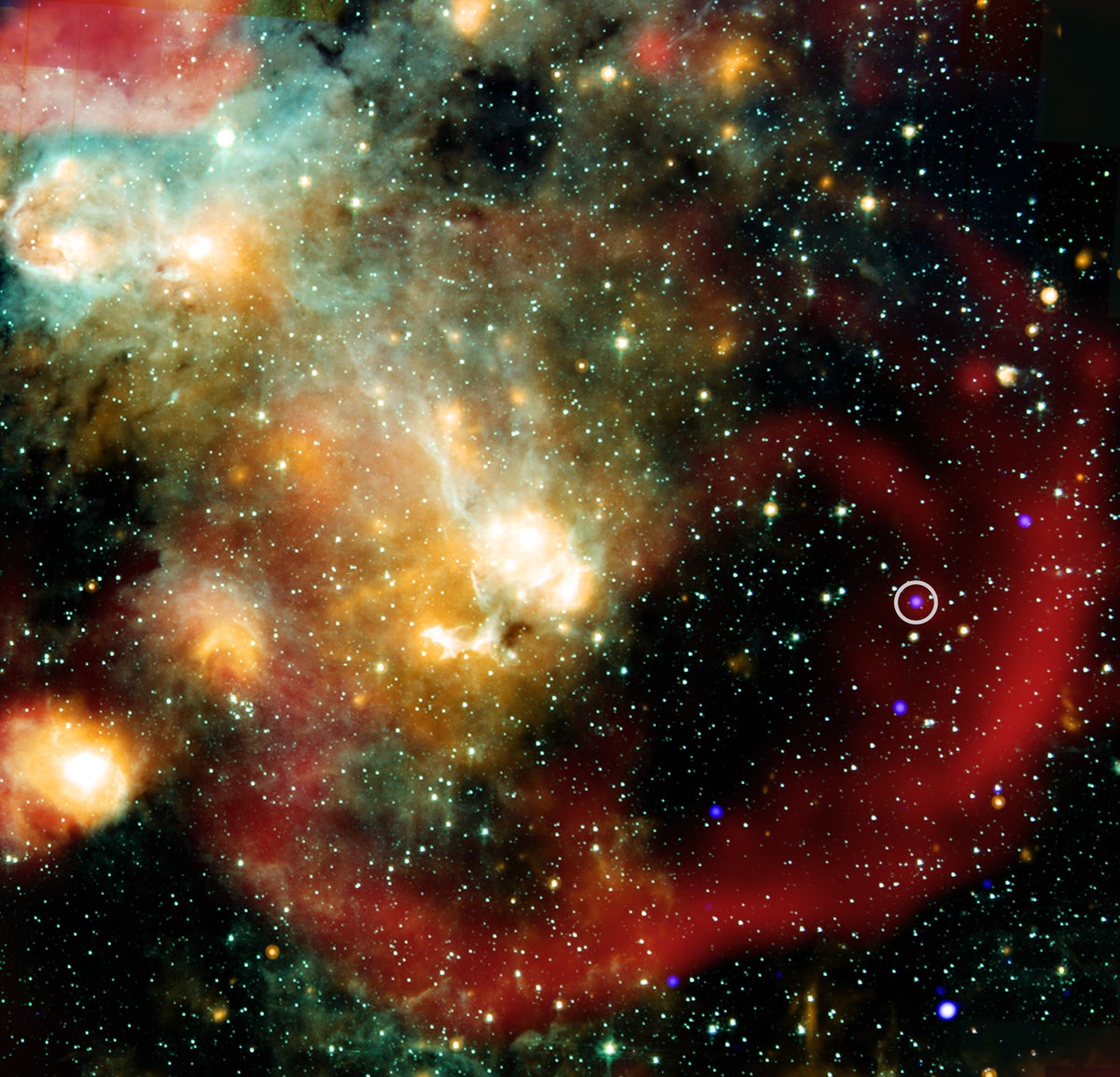Now Reading: Astronomers Unveil Mysterious X-Ray Emitting Object
-
01
Astronomers Unveil Mysterious X-Ray Emitting Object
Astronomers Unveil Mysterious X-Ray Emitting Object

Quick Summary:
- A celestial object named ASKAP J1832−0911, located 15,000 light-years away in teh Milky Way, emits periodic bursts of X-rays and radio waves every 44 minutes for a two-minute period.
- It is classified as a “long-period transient” (LPT), being the first known LPT observed to emit both high-energy X-rays and low-energy radio waves simultaneously.
- Scientists are uncertain about how these signals are generated or why they occur at such unusual intervals.
- The revelation was made by combining observations from NASA’s Chandra X-ray Observatory and Australia’s ASKAP radio telescope on Wajarri Country.
- Preliminary theories suggest the object may be either a magnetar (a highly magnetic dead star) or part of a binary system involving a magnetized white dwarf star. However, neither fully explains its behavior.
- Researchers speculate this phenomenon could indicate new physics or novel aspects of stellar evolution.
- The study was published in Nature.
Indian opinion Analysis:
The discovery of ASKAP J1832−0911 contributes significantly to understanding cosmic phenomena, especially considering it falls within an extremely rare classification with unexplained behaviors. India stands to gain through collaborations in astronomical research as global partnerships often enhance access to high-end technologies like SKA observatories. This deepens opportunities for Indian scientists already working on projects like ASTROSAT for space exploration.
While economic benefits may seem tangential right now, developments in observational astronomy-even ones led elsewhere-strengthen humanity’s comprehension of physics which could indirectly inform tech advancements back home. As an example, understanding radiation emissions at different wavelengths might support innovations across imaging technology industries involving satellites.
India can refine its role as an active player fostering such frontier sciences via bilateral agreements with global leaders exploring interstellar mysteries-a win-win proposition where scientific curiosity meets progress goals.
























